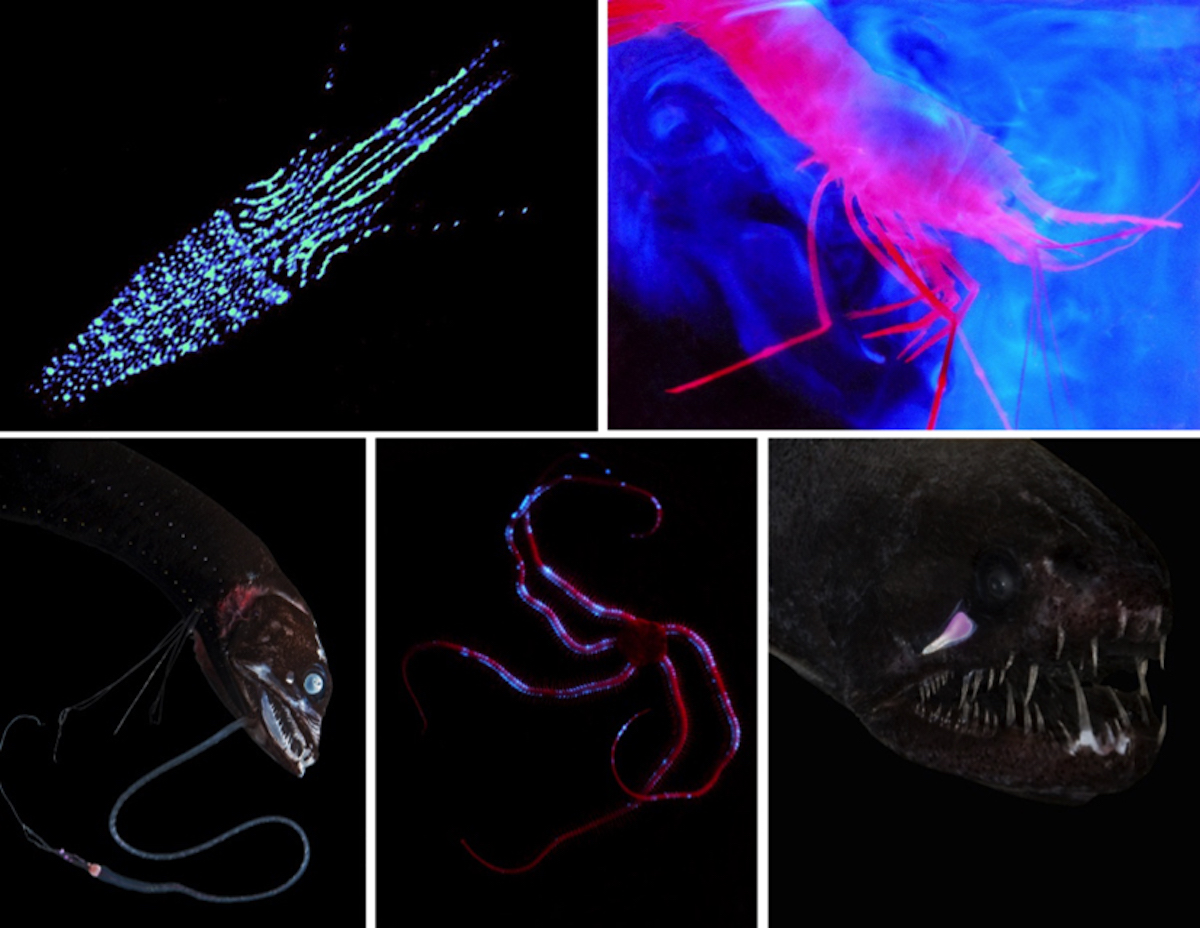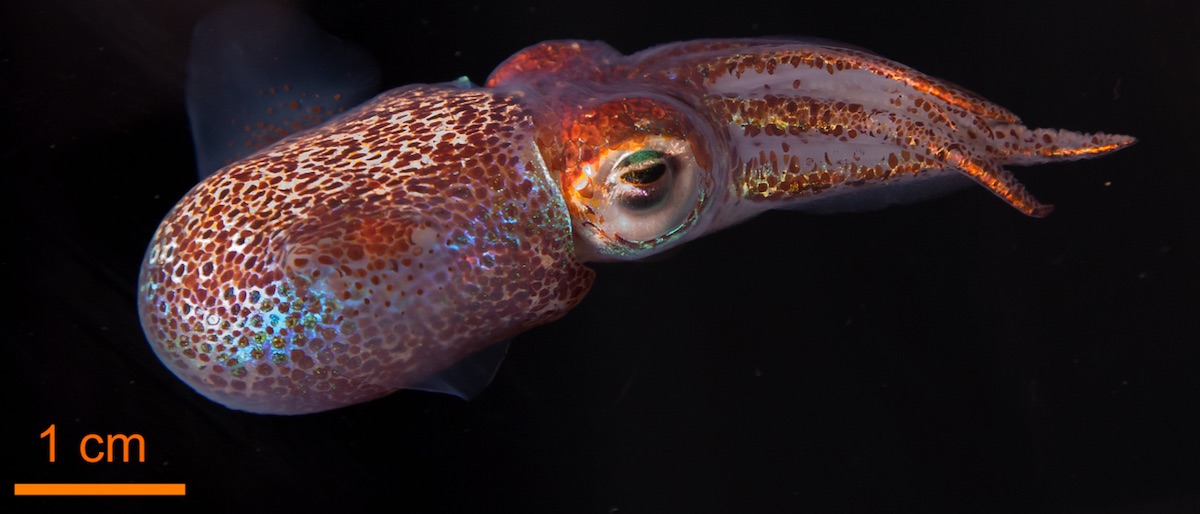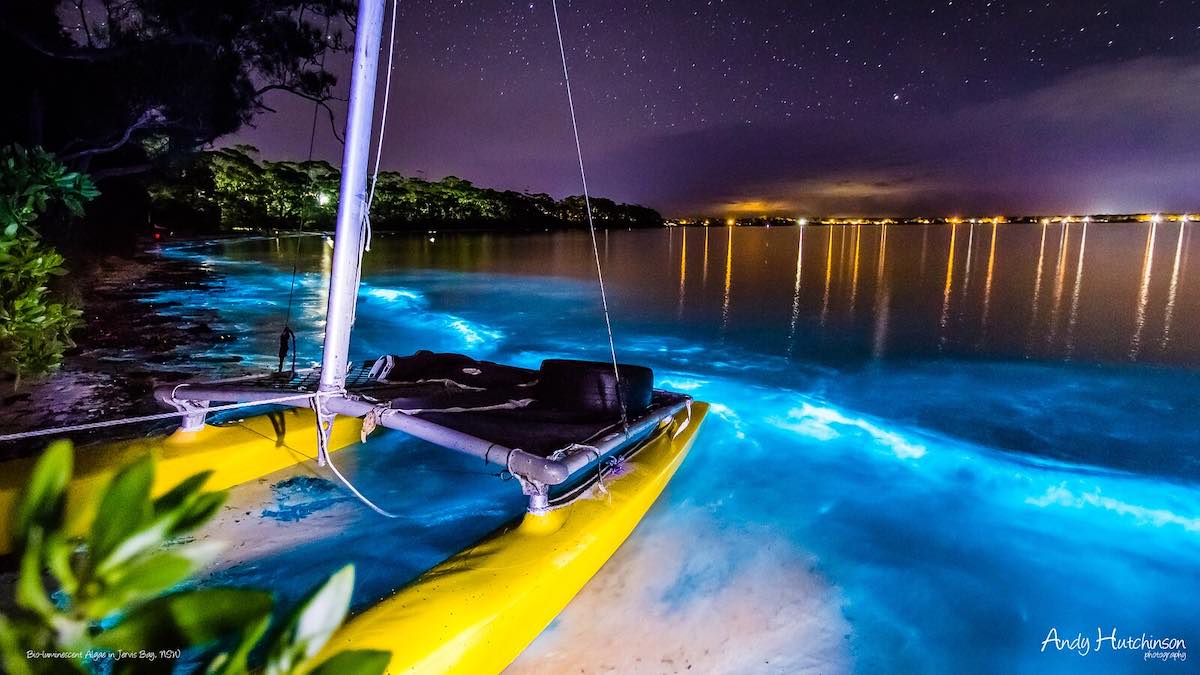Why Do Animals Glow? A Guide to Bioluminescence
Bioluminescent animals will light up your life.

Have you ever wondered how a firefly gets its glow?
If you’ve ever seen a firefly (also called a lightning bug, depending on where you grew up), you’ve seen bioluminescence in action. But these summertime staples aren’t the only ones who bioluminesce—many ocean animals use this process, too. Read on as we illuminate the science behind bioluminescence and share some of our favorite glowing ocean animals.

What is bioluminescence?
Bioluminescence is a chemical process in which an organism emits light. It’s considered a “cold light”, which means only a small percentage of the light contains heat, unlike the light produced by fire or the sun’s rays. The light is produced by a compound called luciferin, which releases light when it reacts with oxygen. All bioluminescent animals contain luciferin, but some (like tiny dinoflagellate plankton) produce their own, where others (like squid and some fish) absorb bacteria that contain luciferin.
Note: You might have seen some corals or sharks that are fluorescent—this is not the same as bioluminescent! Fluorescence occurs when animals reflect back light that hits them, not through a chemical process like bioluminescence.

Why do animals glow?
Believe it or not, being able to glow comes in handy. As a predator, a sudden bioluminescent light can surprise and stun potential prey, or illuminate them to make it easier for the predator to see. Some animals, like the anglerfish, use their light as a lure in the deep sea to draw prey to them. As prey, it can distract or misdirect a predator for a time, allowing the prey to quickly escape. A glowing light can also signal to predators that the potential prey is toxic, or even serve as a warning sign for others that a predator is in the area.
Light can help animals mate, too. Bioluminescent signals can attract a potential mate, or help the animals tell the difference between other males and females.

Which ocean animals use bioluminescence?
There are many species that use this process—we’ve identified 1,500 species of fish alone! Scientists estimate 76% of ocean animals are bioluminescent, including jellyfish, worms, sharks and sea stars. There are even some land organisms, too, including fireflies, mushrooms and beetles. Here are a few of our favorite glowing ocean animals:
- Hawaiian bobtail squid: Bobtail squid have a symbiotic relationship with a bioluminescent bacteria called Vibrio fischeri. The squid provides food for the bacteria, and in turn uses the bioluminescence for camouflage—the resulting blue-ish glow helps the squid blend in with the moonlit waters. Their ability to disguise themselves even caught the attention of the U.S. military, who studied the relationship in an attempt to improve aircraft camouflage.
- American pocket shark: The recently-discovered American pocket shark (Mollisquama mississippiensis) has a creative method to lure in its dinner. The 5 ½ inch-long shark has small glands under its pectoral fins that release a bioluminescent fluid to draw their prey close.
- Deep sea anglerfish: Imagine following a warm, inviting light, only to find a mouth of razor-sharp teeth directly behind it. That is the unfortunate fate of the deep sea anglerfish’s prey (and nearly Marlin and Dory’s in Finding Nemo). Deep sea anglerfishes use their bioluminescent lure to entice fish and crustaceans to draw close to the anglerfish. Only females have the lures, however. They also use it to attract males, who will bite onto the female and fertilize her eggs.
Want to see bioluminescence in the ocean for yourself? While you might not be able to dive to the deep sea, you can see glowing plankton from the surface. Some tropical and temperate locations, like Florida, are home to bioluminescent bays that glow blue and green with bioluminescent plankton. You can dive, snorkel, kayak or simply observe from shore to enjoy the show.
